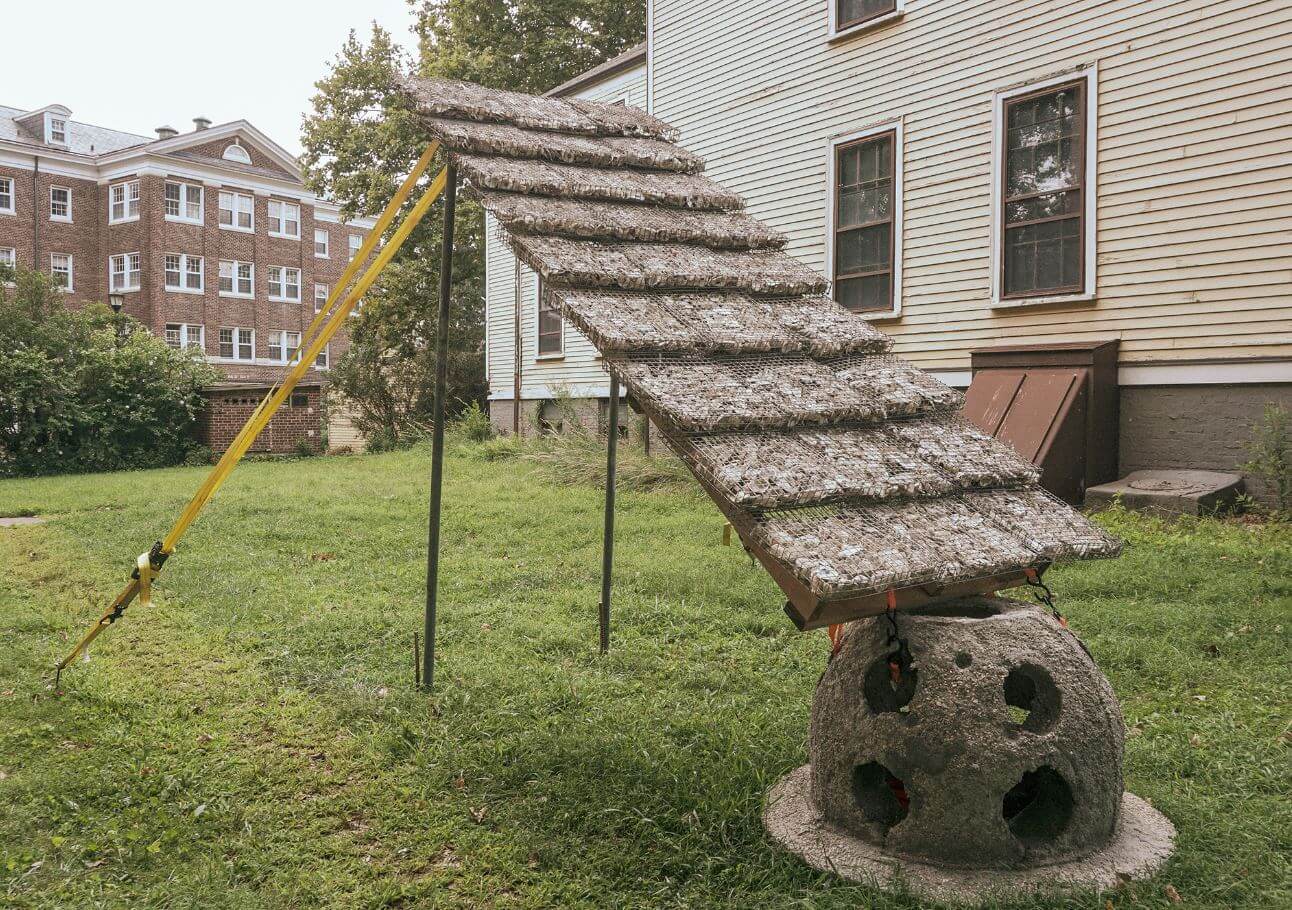In New York Harbor, the latest gaggle of Institute for Public Architecture (IPA) fellows recently concluded their stay on Governor’s Island with a group show, as per tradition. Alejandro Saldarriaga Rubio, Sarah Dunham, Mitchell Gaudet, Dr. Harriet Harriss, and Jessica Martin were the summer 2024 residents.
The final projects—which included meditations on public service announcements, gun violence, ethical burial practices, and other endeavors—were scattered inside Block House and throughout Nolan Park. The exhibition was under the tutelage of IPA residency director Deborah Garcia.
Garcia, who previously taught at MIT and Yale, recently stepped into her new position after her appointment by IPA’s board. “Throughout my trajectory in architectural academia and production my eyes have always been turned to where no one is looking—or to the things we can’t see or put name to,” Garcia said in a statement.
On View at IPA
Today, Sarah Dunham is a partner at MTWTF and visiting assistant professor at Pratt. Dunham’s project at IPA explored the aesthetics and semiotics of public service announcements (PSA) in the U.S.
“The installation at Block House recontextualizes a fire prevention PSA from 1989 whose message ‘Only You’ is rendered unfamiliar through the removal of its accompanying spokesperson, Smokey the Bear,” Dunham told AN. “When researching the history of forest fire prevention PSAs, I became interested in how the public would receive this abbreviated slogan on its own. And, moreover, how we could understand this message to be constructed ‘in the public interest’ as PSAs are defined to be.”
Dr. Harriet Harriss, former Pratt School of Architecture dean, gave a sneak peak into her forthcoming book: Spaces of Solastalgia, was about finding comfort from climate grief. “The work contends that by creating spaces where humans—and potentially other species—can come together to find comfort from climate grief, collective suffering can be alleviated and new life can emerge in the middle of the sixth mass extinction,” Dr. Harriss said.
Meanwhile, Mississippi-based sculptor Mitchell Gaudet opted to use his tenure at IPA to focus on gun violence. “With this installation, I’m simply trying to humanize the statistics. I want people to see and feel each of the 18,856 victims of gun violence and recognize the madness of the gun culture and gun rights lobby,” Gaudet shared.

Alejandro Saldarriaga Rubio, a Colombian architect now teaching at Northeastern University, spent his summer designing a semi-enclosed space for Billion Oyster Project (BOP) made of oyster shells, and other aquatic materials. This resulted in a 1:1 scale sectional mock-up of the shelter pavilion in Nolan Park, accompanied by drawings and models inside Block House.
“As the BOP don’t own the land in which they currently run their operations, the architecture is built out of dry unions to ensure a quick disassembly if they are required to relocate within the island. In case this happens the BOP is able to decide if the oyster files and the reef balls should return to their original use or if they should be reimplemented as architecture in a different site,” Rubio shared.

The installation by Jessica Martin—a New York–based artist, architect, and educator at Parsons School of Design—echoed Kazymyr Malevych. Black geometric shapes were lacquered on the walls of Block House, accompanied by sound and video art.
For IPA residency director Deborah Garcia, these latest projects are good arbiters for what’s to come. “I am excited to work alongside the radical explorers that take part in this unique residency program,” Garcia continued. “The art of communal living and the lessons of communal experience are the future. This is a hub to test those ideas. To live on this island is to set off on an adventure to rethink something much larger—to rethink our very approach to living together.”

